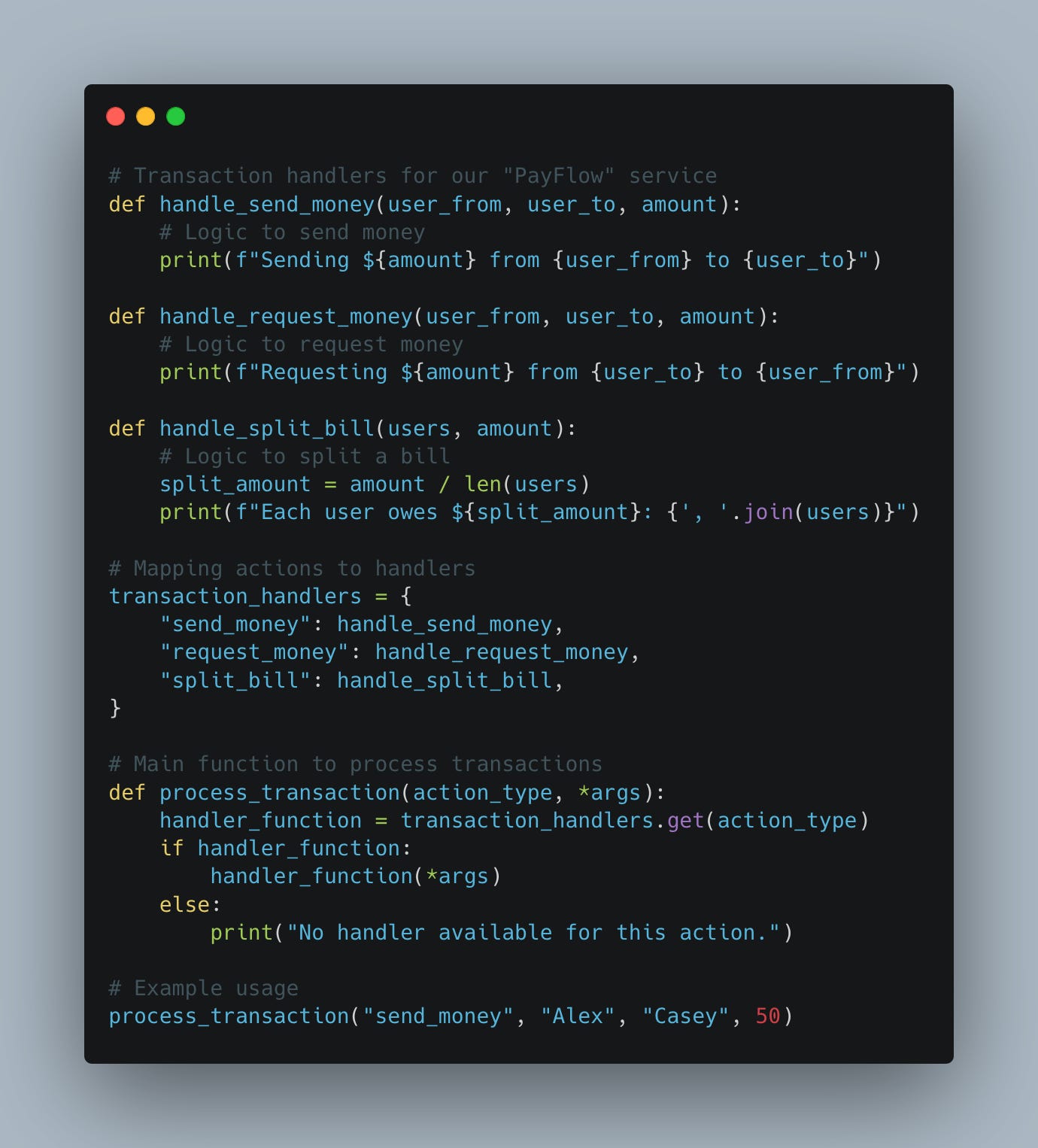Stellar Strategies: Refactoring Conditional Logic into Function Maps
Hello, AstroCodeCrafters!
In our continuous journey through the cosmos of coding, we encounter numerous challenges that test our ability to write not just functional, but maintainable and scalable code. Today, we're focusing on a pattern that brings elegance to handling a common coding scenario: conditional logic. We'll explore how to replace bulky if-elif-else blocks with a sleek dictionary-based function mapping in Python, with practical examples that you can integrate into your own projects.
Navigating Conditional Logic: The Traditional Way
Picture this: you're crafting an application that processes various types of user transactions. A typical approach might involve a series of if-elif-else statements to execute the correct function based on the user's choice. Here's what this might look like in a payment processing module:
This is simple and straightforward but becomes unwieldy as the application grows. Adding a new transaction type means more elif blocks, making the code harder to read and maintain.
A Smarter Path: Function Mapping with Dictionaries
Enter the dictionary: Python's versatile data structure that associates keys with values. By using a dictionary to map transaction types to their corresponding functions, we can streamline our conditional logic. Look at how we can refactor the above example:
With this elegant structure, adding new transaction types becomes a breeze—simply add a new key-value pair to the transaction_handlers dictionary.
AstroCodeCraft's Example: Payment Flow in a Fictitious App
Let's apply this technique in a more detailed example. We'll call our hypothetical app "PayFlow", a place where users interact with various transaction types. Below, find a comprehensive sample implementation showcasing how this pattern plays out in a real-world scenario.
In "PayFlow", adding a new type of transaction is as simple as defining a new function and adding it to the transaction_handlers. This keeps our code modular, easy to understand, and, importantly, easy to extend.
Final thoughts
The dictionary-based function mapping pattern exemplifies the Pythonic principle of writing "flat" rather than "nested" code. It promotes readability, scalability, and the open/closed principle of software engineering: systems should be open for extension but closed for modification.






